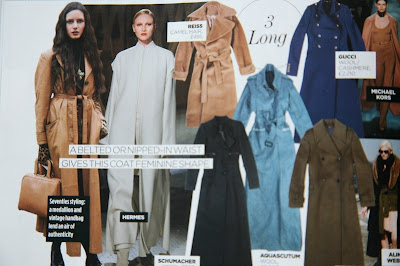I travelled home from London the evening before last on a heavily crowded train. My exhaustion only allowed for slumping in the seat while watching trees and towns swoosh past. The many crop fields that sped by (already shorn and given buzz-cuts) confirmed that autumn has definitely jumped ship and arrived early. As for summer, it slouched off with its hands in its pockets to play truant ages ago; hasn’t been seen since.
Yellow leaves are even now scattered across the city pavements of Portobello and Primrose Hill, whilst back home the smoke from garden fires permeates the valley outside my window. Our house also smelt of burning yesterday, but that was because our new internet modem started smoking ominously when we first plugged it in. That makes it sound like a rebellious teenager. It wasn’t - but it was just as irritating.
Although I love this season – full of spiced colours, misted endings and new beginnings – there is one thing I will be particularly sad to say goodbye to: reading books outside. I have a feeling that by September the only alfresco page turning will happen while swaddled in a cable knit jumper or welsh wool blanket.
A book is a book whether it falls open in Mumbai, Japan or the Cotswolds. Wherever it is read, the pages will spin webs of worlds to get snagged in. However summer (in Britain at any least) is roughly the only time of year when one can pack a drink and a copy of Wildwood by Roger Deakin, and then relax to experience his words as I am sure they were meant to be heard; accompanied by the sound of birdsong and breeze. This is completely different to hunkering down with a cup of hot chocolate by the fire on a December evening.
The act of being transported to another location – be it Deakin’s bluebell wood or Patrick Leigh Fermor’s Germany – is the same regardless of weather or season. What changes is how the surroundings affect what is being read.
Take Laurie Lee’s ‘A Rose for Winter’. The first time I heard his beautifully crafted memoir it was while recovering from surgery in hospital. The soothing sound of my mum reading aloud the details of places and characters was the only thing that could lull me to sleep. I hardly remembered the events, as they were all half-heard, but I did feel moved nonetheless. Maybe my groggy state helped to make post-Civil War Spain all the more vivid. I could almost feel myself seeing the same views Lee must have enjoyed.
I re-visited the book during the summer months, and gobbled it up in about two sittings. If I remember rightly I picked it up after my exams had finished and grabbed a few hours of sunshine. Often I read while listening to my ipod, but this isn’t always the case. Outdoors, better to be absorbed completely.
Travel writing – especially the trinity of Laurie Lee, Patrick Leigh Fermor and Roger Deakin – is a very distinct genre. These books are not plot-driven, but chug along at a sedate pace, propelled by the power of description alone. They can be dipped in and out of. They are not furious reads, but languorous. Just the kind of book I pick up at midnight if I can’t sleep (I have tried and failed to see if I could spend an entire night reading, but I always get too tired).
The mark these books leave is a desire to visit the places depicted. That’s fine if the novel in front of you is ‘Waterlog’, as one could pay homage to the rivers and lakes that Deakin swum in. Not so easy if one is reading ‘As I walked out one midsummer morning’ . The parts of Spain portrayed by Lee’s pen have crumbled away now. Our constant evolution as a human race is reflected in the landscape around us. We tear down buildings and construct new ones. Forests are cut down and replanted. Cars, computers and electricity have completely changed the way we live. My great-grandma was born in 1917. How different was her childhood? Books, like photos and films, act as preservatives. The images are pickled, dried or suspended in formaldehyde.
This was especially clear to me when I visited Spain for the first time this summer. I can’t remember if Lee ever travelled as far as Galicia, but although there were elements I recognized (terracotta roofs, yellow buildings, large rocky outcrops in the sea), this country is of course as much a part of the twenty-first century as the rest of Europe. Thank goodness we do have books to give us a rich history of these countries. Not static museum exhibits, but tales with a beating pulse that remind us why it is as important to remember the past as to look towards the future.
Conversely, Berties Vintage – described in detail in my previous post - is a modern shop decorated to resemble another decade. Like a good travel book, trying on dresses behind two gold, draped curtains immediately lifts an otherwise mundane day. To step into the shop, which is scented with the kind of perfume one imagines ‘ladies’ dabbing behind the ears with glass stoppers, is to dive headlong into another time. Who needs a Tardis?
The dress was kindly lent from Berties vintage, and is accessorized with a second hand hat and a sash from the dressing up box. The high heeled sandals were from ebay (they’re Office) and the silk shirt was found in my local charity shop. The bag was from the Big Chill St Michaels charity stall.
Finally, thank you to everyone who sent me comments, emails and twitter messages to let me know that I was in the September issue of UK Vogue, on page 204. This was a very wonderful shock. Here is the photo:




















0 comments:
Post a Comment